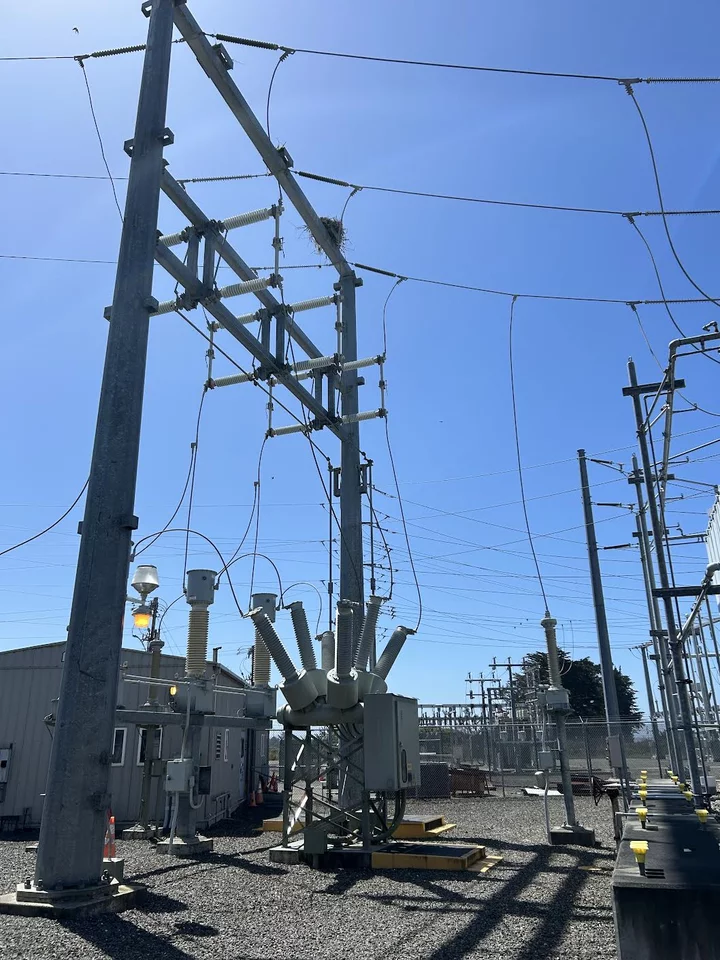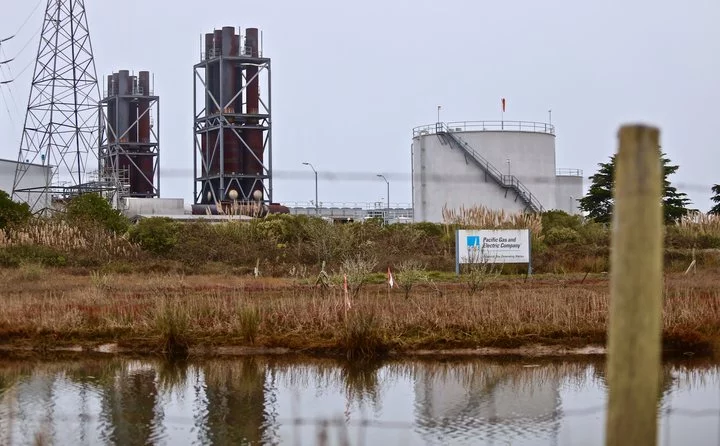An osprey nest was recently discovered perched above a high-voltage circuit breaker at PG&E’s Humboldt Bay Generating Station in King Salmon. | Photo courtesy PG&E.
###
A local osprey — or perhaps a pair of them — picked a real bird-brained spot to build a nest: way up on top of some high-voltage electricity equipment at PG&E’s Humboldt Bay Generating Station in King Salmon.
Ospreys, which were historically called sea hawks, love nesting near bodies of water that have adequate food supply, and of course the PG&E plant sits right on the banks of Humboldt Bay, from which they can nab tasty surfperch, silversides, herring and the like.
But PG&E personnel have determined that this spot isn’t safe, and they plan to move it to a nearby wood pole — one that’s not connected to infrastructure that thrums with electrical current.
“When the nest was discovered, we flagged it for our biologists on our avian team to make an assessment,” PG&E spokesperson Megan McFarland said via email. “We have a comprehensive avian protection team at PG&E to address these kinds of safety issues.”
The utility is building a nesting platform atop the nearby wood pole. PG&E has a permit from the U.S. Fish and Wildlife Service that allows this kind of work, according to McFarland. She said biologists have assured her that ospreys tend to do fine with relocations.
But this particular osprey doesn’t appear to be in a relocation kind of mood. When PG&E personnel approached the nest on Saturday, the bird was defensive, possibly guarding eggs inside.
“[S]o we wanted to give it time to calm down,” McFarland said.
Monte Merrick, co-director of the local avian rescue nonprofit Bird Ally X, said PG&E’s plan looks likely to be successful, given the parent’s demonstrated interest in the eggs and the nearby relocation spot.
“I’ve been at the PG&E plant for other issues (river otters) and I do believe that the local team of biologists at that facility strive hard to do the right thing by the wildlife that shares the location,” Merrick said.
McFarland said that PG&E workers and biologists are working on a solution that’s in the osprey’s best interest. When osprey young are learning to fly, they experiment by practicing their skills just above the nest. So far, nobody’s been able to get close enough to see if there are eggs or hatchlings inside this particular nest.
McFarland said PG&E is still working to determine the best timing for the relocation. She offered to keep us updated as the move progresses.
PG&E’s Humboldt Bay Generating Station. | File photo by Andrew Goff.
NOTE: This post has been corrected to accurately refer to PG&E’s Humboldt Bay Generating Station.


CLICK TO MANAGE